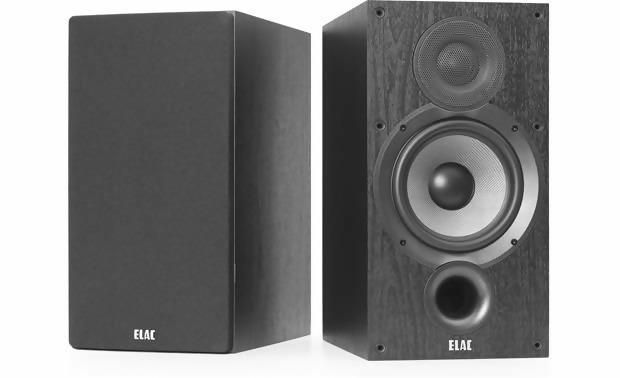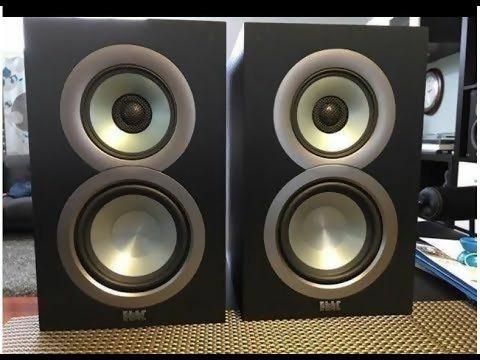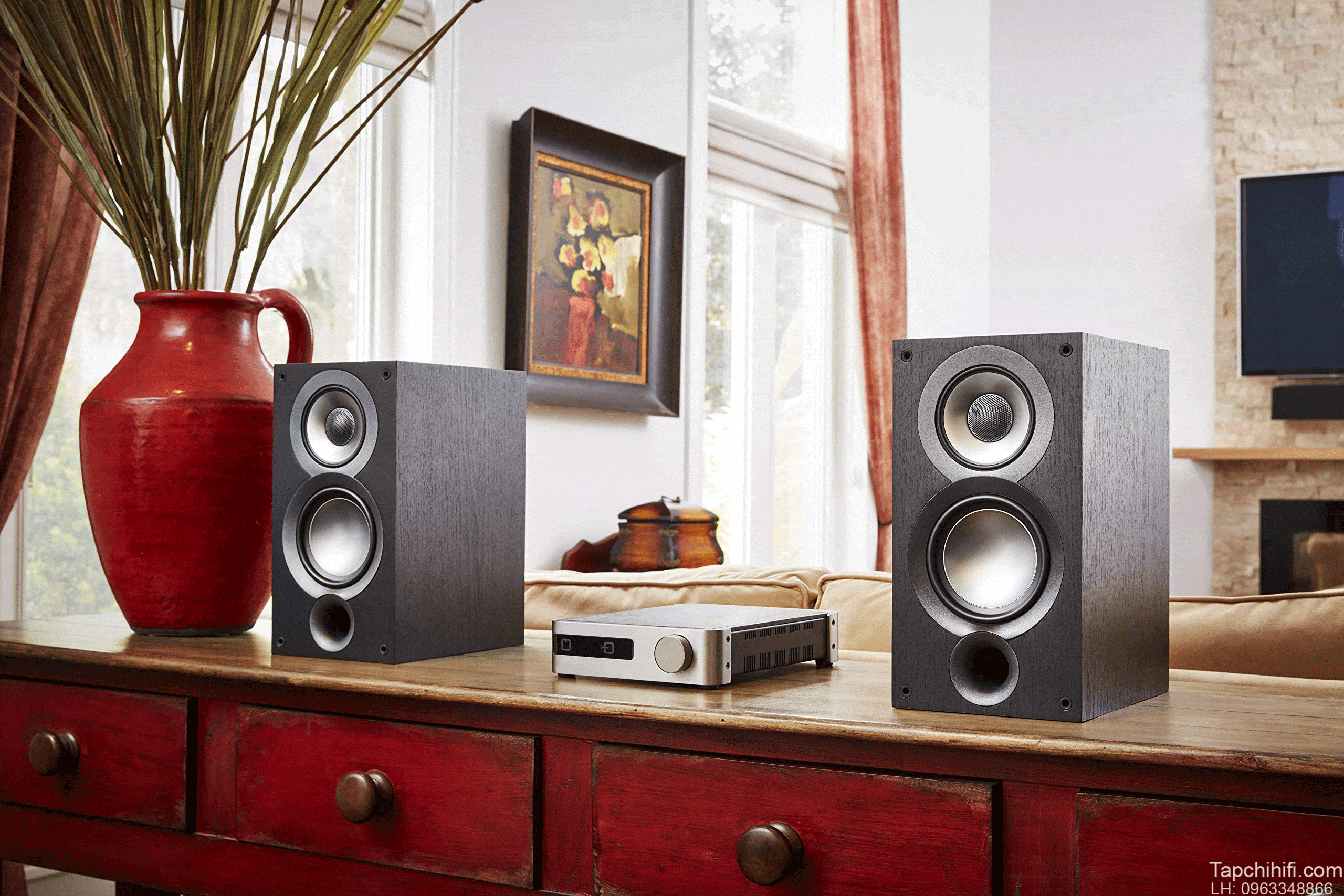Contents
The original Elac Debut B6 was first launched in the year 2015 just recently after the designer Andrew Jones had left Pioneer and yet he was ready with a fully formed speaker design that immediately became the favourite bookshelf speaker for the money. Beside Elac Debut B6, Andrew Jones has just creative Elac Debut UB5. So between Elac B6 vs UB5, which should you choose? Read on to make a judicial choice.
Elac B6

The new B6 managed to make some improvements on the original speaker mainly in terms of the build quality, and it only costs $20 more. The new design sounds like a fusion of the old Debut and the newer Uni-Fi, with a clearer and more open performance than before. The B6 is a great speaker for less than the amount of an AV receiver or even a decent record player.
Other companies right now are finally catching onto what designer Andrew Jones is doing. Q Acoustics, Emotiva and Polk are the names of the few companies that also offer amazing speakers at around similar prices to the B6, but none of which are quite as good. If you want a pair of speakers with excellent bang-for-buck and an enveloping sound, then you should definitely go for the Elac B6.
The B6 also includes floor standers, Atmos height speakers and a sub. The B6 is available for $299, £299 and AU$699.
Not much family resemblance
The B6 has a cheerfully retro appearance that recalls older British designs from Bowers and Wilkins or Wharf dale. When placed alongside the new B6.2 it looks like a completely different speaker – where the B6 was short and squat, the update is taller and slimmer with the noticeable addition of a front bass port.
The B6 carries a 6.5-inch aramid fibre similar to Kevlar woofer and a 1-inch silk dome tweeter, but the implementation of them is quite different. For example, the tweeter on the 2015 model was recessed which made the speaker more directional, but the tweeter in the new updated model is almost flush with the front panel. In addition, the driver now boasts an extruded dust cap that is designed to make the driver a bit more responsive.
Ub5

The hype surrounding speaker designer Andrew Jones’ newest creation was deafening. The saying goes that everyone who saw the Sex Pistols’ first gig started a successful band. It seemed like everyone who heard Jones’ ELAC prototypes wrote a tweet or post or article saying how the new speakers blew them away. The UB5s promised the sonic world that they could rock, they imaged like crazy and that they would be damned affordable. Fortunately, they indeed do live up to the buzz and expectations. For $500, here is a speaker that offers a true three-way design, a compact form factor and true high-fidelity performance. The ELACs produce a stereo image like nothing else at that price, and the bass response is superlative. These speakers are both poet laureates and moustachioed headbangers.
The only minor caveat to the recommendation of the ELAC is that the cosmetics could use some work. The design is “love it or hate it”, and this isn’t helped by a vinyl wrap which is not as resilient as that on the other speakers.
You’ll find a lot of performance bookshelf speakers vying for your attention between $500 and $1,000, but on pure value-for-money terms, none of them can hold a candle to the ELAC UB5. The company is clearly on a roll and based on the performance of the UB5 we are looking forward to hearing the other announced models in the Uni-Fi line such as the floor standing UF5 ($999) in the near future.
The UK and Australian availability and pricing aren’t yet announced but according to reports, the UB5 will get a slightly modified design in those countries including a different and more expensive finish. Current exchange rates convert to £342 or AU$689.
Design of UB5
The star of the UniFi’s design is the concentric driver which consists of a 1-inch soft-dome surrounded by a 4-inch aluminium cone. This driver is paired with a 5.25-inch aluminium cone, and the design is rear-ported. As a result, keeping the cabinet at least three feet away from walls will help to contain the boom – however, unlike the competitive B&W 685s, there aren’t any foam bungs to contain bass response.
Sound Quality
The bass went deeper than a speaker armed with just a single 5.25-inch aluminium-cone woofer has any right to. Using a tone generator we explored the Uni-Fi UB5’s deep bass extension, first at 50 hertz, then we lowered the frequency down to 40Hz and the Uni-Fi UB5’s output dropped, just a bit. We continued down to 30 Hz and the Uni-Fi UB5’s output dropped a few more decibels, but those very deep bass frequencies were still very present! That’s simply superb on a speaker of this size.
Elac B6 vs UB5
After we brought out the ELAC Debut B6 bookshelf speakers to compare to the Uni-Fi UB5, the B6 is still an awfully impressive speaker, but the bigger Uni-Fi UB5 is better in every aspect. It has a deeper and better-defined bass as well as clearer midrange and treble, and the UB5s image is also better.
The Uni-Fi UB5s were better than the B6, but the Uni-Fi UB5s still seemed to be holding back, so we hooked up a pair of Klipsch RP-160M speakers, and they brought the Stones back in full force. Dynamics were much more alive over the RP-160Ms. Continuing with Battles’ “Gloss Drop” rock album, the Uni-Fi UB5s sounded fuller and warmer, but the RP-160Ms rocked harder, so the sound was brighter and more exciting. The Uni-Fi UB5s had more weight and low-end punch but missed too much of the RP-160M’s dynamics.
Conclusion about Elac B6 vs UB5
The Debut B6 is easily the best value speaker in our line up and is by no means a “compromise”. But if you have the means, we always recommend upgrading the Uni-Fi line. There are many great reviews of the Elac B6 vs UB5 describing their sound.
Many find that UB5 them overall smoother with the vocals and dialogue. The UB5 with its concentric driver is a true three-way speaker. So the mid-range doesn’t have to produce the bass frequencies also the tweeter and mid-range have better blending because of the concentric layout. The higher price isn’t the only deciding factor. Your Amplifier also needs to be able to handle the lower impedance of the Uni-Fi speaker. Like most high-end speakers the Uni-Fi are 4-ohm speakers. Most mid to higher-end amps can handle 4-ohm speakers and if not there are ways to use the Uni-fi with those amps when using a subwoofer as most do.

Hi music fan! I am Jeff. Hope that you enjoy some stuff I shared here in my personal blog.
About myself, Currently I am in charging as Artist Manager/Music Supervisor at 72 Music Management. I did managed album to Grammy Award in 2017 with 7 Nominations from 2014-2020 and had the opportunities to work with : A.J. Croce, Blind Boys of Alabama, Bobby Rush, Dom Flemons, Dustbowl Revival, Sarah Grace
Governor of the Memphis Chapter of The Recording Academy is one of a award that I am lucky to achieved.
